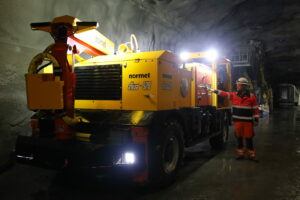

Electrification of Construction vehicles is closer than we thought and it is about time for this transition, after a difficult year for the energy supply sector.
Recalling the McKinsey report on the Electrification of Heavy Machinery and Equipment, it was analyzed that BEV is already more cost-efficient than ICE, with up to approximately 21 percent lower TCO compared with similar internal combustion engine traditional ICE equipment. This change is attributed to the 40-60% lower operating cost reduction, thanks to reduced fuel consumption, and a simpler drive-train with fewer moving parts, requiring less maintenance.
Even though the total cost to operate a BEV is lower, the BEV is likely, in the short and medium term, to require a higher up-front investment than the ICE. It is predicted that the difference in the price will be approximately 10% more expensive than the ICE for another 5 years.
But what are the barriers that are stopping the industry of heavy construction vehicles from fully electrifying?
From this analysis done by McKinsey, the main barriers are related to Customer economics; Stricter regulation; Charging solutions; Performance of BEV; Product supply.
Taking them one by one, research about customer economics indicates The BEV TCO advantage is driven by a significantly lower operating cost, despite the still higher upfront costs relative to ICE. In some scenarios, BEVs are already more cost-efficient than ICE vehicles, with about 20 percent lower TCO compared with traditional ICE equipment.
Stricter regulations on heavy machinery that are being imposed on global, regional, and local levels will be easily met and respected by electric vehicles.
Charging solutions refer to the challenges arising from the limited operational time of the batteries for various types. Even though there will still be several heavy machinery and equipment types and applications where adoption will be slow due to the remoteness of work sites and limited or unreliable access to electricity, charging solutions are improving significantly.
In general, Performance BEV is superior to the ICE equipment in terms of better maneuverability, independent wheel control and significant synergy potential with automation and connectivity. However, there can also be limitations for some other types of equipment for which irregular usage patterns and performance requirements will not allow for regular charging.
Product supply has always been a significant barrier. However, now new solutions to facilitate the process are emerging.
The challenges that lie ahead…..
From research by Interact Analysis, it is predicted that by the mid-2020s, 10-15% of construction vehicles in some sectors will be battery-electric or hybrid.
But what are the challenges? Infrastructure is one of them. Difficulties in providing power in construction sites to recharge machines, lack of space, need for big power supply cables, transforms, charging stations or machines are some of the factors that challenge the process.
In addition, the length of time before a vehicle will need recharging is also an essential factor to consider. For small machinery, battery-swapping can be a quick solution, but for long-term operation, charging stations would be needed. For the largest machinery and vehicles, battery-electric solution technology can be challenging to have. There is where Hydrogen comes in.
In 2019 the World Energy Council launched Hydrogen Global as a platform to promote the production and use of clean hydrogen. Governments around the world are working on identifying new ways to bring technological scale to hydrogen production.
This is our essential core business at SubSpce Energy Hub and we are working hard in testing the benefits of bringing batteries and hydrogen together, to solve the energy storage and supply issue in a fast, potentially economical manner. Hydrogen as a chemical energy storage can complement and serve as a reliable alternative to batteries especially when the price for hydrogen drops and becomes more competitive. This solution can be a game-changer in enabling the power supply of large construction vehicles on sites.
Photos: Normet Group equipment prototyping the electrification in construction machines at Hagerbach Test Gallery (VersuchsStollen Hagerbach AG)